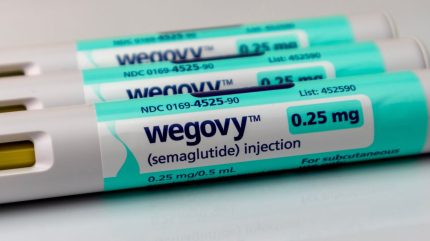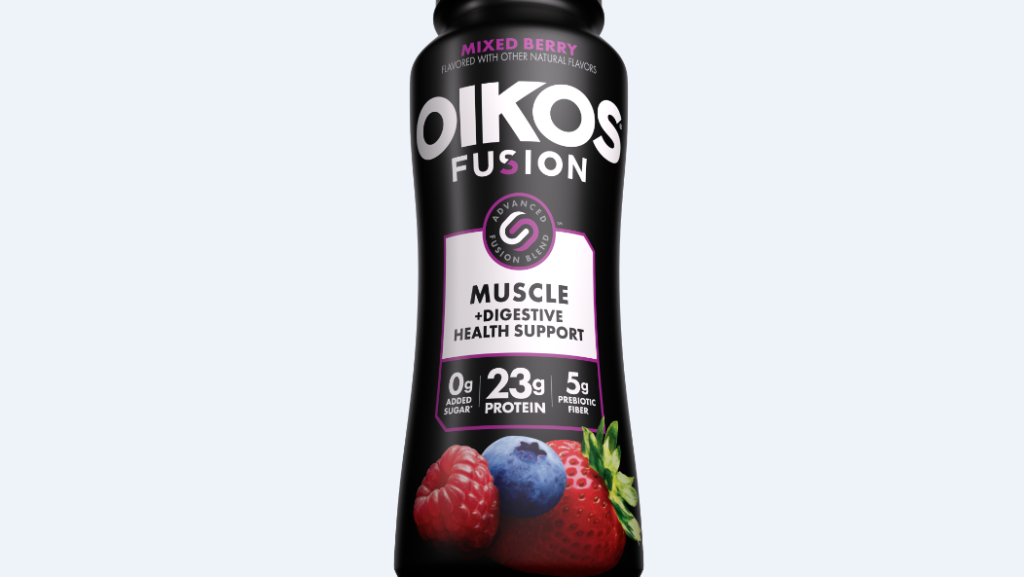
A few years ago, if a famous face turned up to a red-carpet event with a slimline new look, there would be chatter about which latest diet fad they were using. Paleo, keto or intermittent fasting? Today, if a celebrity experiences dramatic weight loss, the first question on anyone’s lips is: are they using Ozempic, Mounjaro – or one of the other branded GLP-1 weight loss management medications?
Rapid weight loss – the holy grail for dieters for decades – is finally within arm’s reach thanks to this miracle medication and users don’t have to eat like a squirrel or spend hours sweating it out in the gym to achieve major gains.

Discover B2B Marketing That Performs
Combine business intelligence and editorial excellence to reach engaged professionals across 36 leading media platforms.
But what does the growing use of GLP-1 medications mean for food manufacturers? Is it a trend on which they can capitalise or will its growing use be detrimental to their business? And, if it does present an opportunity, which product categories offer the greatest scope for them to cash in?
In the long term, it’s difficult to predict with any degree of accuracy what impact GLP-1 medications will have on the food industry. For starters, large numbers of people haven’t been taking these drugs for long enough to establish a concrete body of evidence.
A recent Cornell University study suggested GLP-1 users typically reduced their spend on groceries by 6% on average within six months of adoption, which bounced back slightly in the longer term but not to pre-adoption spending levels.
Even if this reduced spending trend is set, what isn’t clear is how people will use the medication in the future. Will they carry on taking it for years? Will they take it once and come off it for good having shed the pounds they were looking to lose? Or, as with yo-yo dieting, will they take the drug and lose weight, come off it and put the weight back on again and then go back on it, repeating the same cycle for years?

US Tariffs are shifting - will you react or anticipate?
Don’t let policy changes catch you off guard. Stay proactive with real-time data and expert analysis.
By GlobalData“These are the three scenarios that mean it’s not that straightforward to market towards,” says Cyrille Filott, global strategist for consumer foods at Rabobank. “What food companies are struggling with a bit is understanding whether this is going to be a lifestyle thing or just a one-off.”
What food manufacturers have already recognised is there are new consumer habits that need serving.
“In effect, there are two needs here,” explains Hamish Renton, CEO of UK-based consultancy HRA Global. “There’s a physiological need and a psychological need. The psychological need is for food manufacturers to provide, if you like, education, encouragement and a sense that they’re on the side of the shopper who is on this journey.
“On the other side of it, they need specific things. They need smaller portions of food that have stronger flavours and pack more of a nutritional biological punch. They also need food that is faster to digest because the people on these compounds get a lot of nausea. The odds of them getting a pang of hunger and staying hungry for an hour is quite unlikely because it will be overtaken with a bout of nausea.”
GLP-1 users need specific things from food
Hamish Renton, HRA Global
While the early evidence suggests consumers on GLP-1 drugs are eating less and spending less – particularly on fast foods and snacks – as it is still early days, the spending patterns of users hasn’t settled down enough for many food manufacturers to start developing products that specifically target the users of the medication.
“There are several barriers here to understand and work through,” says Mark Field, director and founder at Prof Consulting Group, a UK consultancy. “On the programme, the user goes through three key states where the nutritional need differs alongside the quantity of food consumed. Successful innovation here would need to understand each stage and build products for each stage. This is not new, as we have seen it with infant formula, etc, but it is a key consideration.”
A GLP-1 boost for dairy?

While some manufacturers might be struggling to get to grips with the opportunity, others have sought to steal a march on their rivals and are developing products that respond to the nutritional needs of GLP-1 users and help manage the side effects and support appetite suppression, says Laura Jacobson, a senior partner at UK grocery insights group IGD.
“Innovation is focused on delivering high nutritional value in smaller portions, with an emphasis on high protein, high fibre, reduced sugar and hydration,” she explains. “Some brands are launching purpose-built products, such as Nestlé’s Vital Pursuit frozen meals and Danone’s Oikos Fusion protein drinks. Others are repositioning existing ranges to highlight their relevance. Conagra’s ‘On Track’ badge within its Healthy Choice line signals suitability for GLP-1 users.”
With users of GLP-1 medications seeking out foods that also support digestive health, one product category that could be uniquely positioned to meet these needs is dairy.
“Yoghurt is an accessible, high-protein option that aligns with these needs – and among GLP-1 users, yoghurt and fresh produce are the only food categories seeing increased spending, while purchases of calorie-dense and processed foods decline,” Whitney Evans, director of nutrition and scientific affairs in North America for Danone, says.
Yoghurt and fresh produce are the only food categories seeing increased spending
Whitney Evans, Danone
Earlier this year, Danone launched its Oikos Fusion range of cultured dairy drinks, developed to help GLP-1 users build and retain muscle.
Another dairy major mulling the opportunities presented by GLP-1 drugs is Arla Foods. “One of the key challenges with weight-loss products is that when you eat less, you have to focus even more on getting enough of the nutrients you need. You cannot just downsize on your diet as a whole and expect the body to keep functioning as it should,” Sandra Irene Jørgensen, vice president of innovation at Arla Foods, explains.
“This is where our products, based on nutrient-dense milk, are especially relevant and where we also so a correlation between the rise of GLP-1 and popularity of specific categories such as our Arla Protein range and gut-health products.”
Beyond dairy
Another company that’s developed a product range for GLP-1 users in the US is Japanese manufacturer Nissin. In June, the company launched a protein-fortified frozen meal brand called Kanzen Meal.
“Americans have a deep affection for their comfort foods,” says Bob Little, CEO of Kanzen Meal. “You’ve got this dynamic where half of Americans are saying that they are actively trying to eat better but only 10% of us are getting the recommended daily allowance of fruits and vegetables, which creates these huge nutrient gaps in our diet. That was the key insight that started this project two-and-a-half years ago, where we said, ‘what if we take the comfort foods that Americans want to eat and put the nutrients in there that they need and close those nutrient gaps for them?’”
Little says the product isn’t specifically targeted at GLP-1 users. “We think of GLP-1 consumers as part of a much larger sub-group of consumers in America that are aware of these nutritional gaps in their diet and want to do something about it. With only 9-12% of Americans taking these [weight-loss] drugs, we think that there’s a much larger audience looking to address this just by the way they eat.”
Ingredient suppliers are busy carrying out extensive research to understand the needs of this new consumer base to inform its approach to product development.
Tate & Lyle says it has identified the five greatest nutritional unmet needs and segmented their importance across current GLP-1 users, former users and non-users, explains Emma Cahill, the US-based platform marketing director for sweeteners and fibres at Tate & Lyle.
“The GLP-1 non-user group extends to anyone following a traditional weight-loss diet or additional members of a GLP-1 user household who are making health and wellness choices,” she says.
“This has helped our customers cut through some of the noise, to formulate with intention and to communicate specific consumer benefits versus more generic GLP-1 suitability or support.”
Given the projected rapid adoption of GLP-1 drugs across the globe, it appears likely more products across categories will be developed to specifically meet the needs of current and former users.
“GLP-1 users are a growing segment of the population, for whom protein and nutrient-dense foods are top priorities,” says Luisa Robinson, vice president of convenient nutrition at Danone’s North American business. “While usage numbers are ever-evolving, data shows that approximately 10% of the US population have used a GLP-1 medication. The rise in GLP-1 users presents a significant shift in consumer behaviour and dietary needs, making the introduction of a dedicated GLP-1 food section a possible evolution in retail.”
The usage of these weight-loss drugs may still be in its infancy but momentum is building fast, adds Jacobson at the IGD. “Now is the time for businesses to think strategically, across category, occasion and channel, to unlock growth and stay ahead of disruption.”





